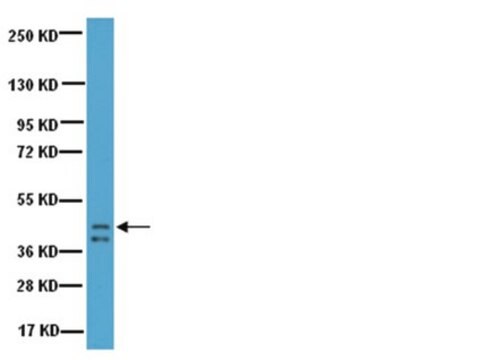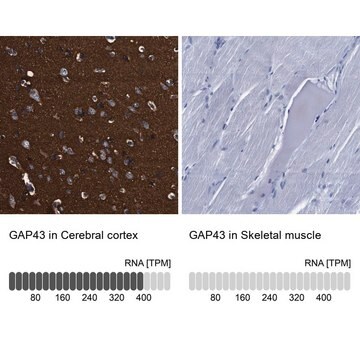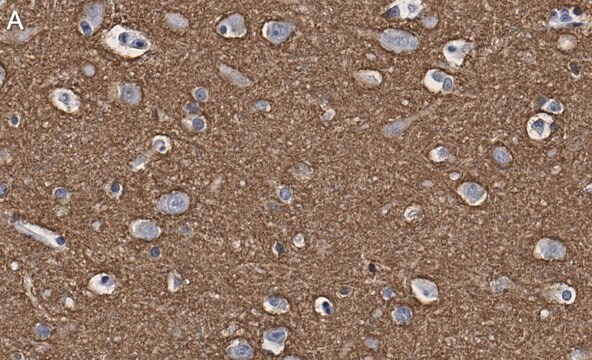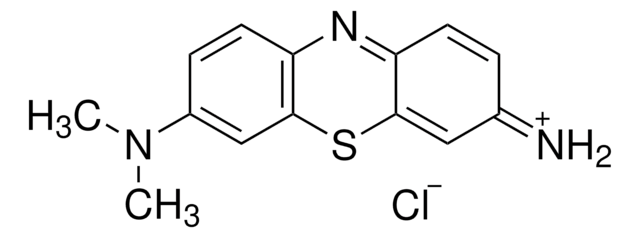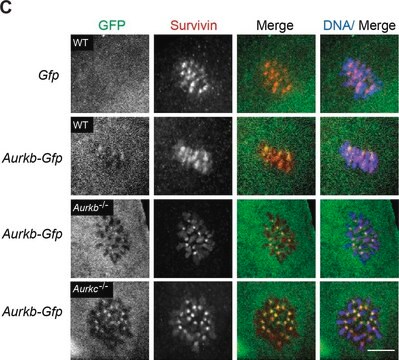G9264
Monoclonal Anti-Growth Associated Protein-43 antibody produced in mouse
clone GAP-7B10, ascites fluid
Sinonimo/i:
Anti-GAP-43
About This Item
Prodotti consigliati
Origine biologica
mouse
Livello qualitativo
Coniugato
unconjugated
Forma dell’anticorpo
ascites fluid
Tipo di anticorpo
primary antibodies
Clone
GAP-7B10, monoclonal
PM
antigen 46 kDa
contiene
15 mM sodium azide
Reattività contro le specie
hamster, human, feline, rat, chicken, snake, mouse
tecniche
immunohistochemistry: suitable
western blot: 1:2,000 using newborn rat brain extract
Isotipo
IgG2a
N° accesso UniProt
Condizioni di spedizione
dry ice
Temperatura di conservazione
−20°C
modifica post-traduzionali bersaglio
unmodified
Informazioni sul gene
human ... GAP43(2596)
mouse ... Gap43(14432)
rat ... Gap43(29423)
Categorie correlate
Descrizione generale
Specificità
Immunogeno
Applicazioni
- immunostaining of tissue sections from the prefrontal cortex and hippocampus of rat pups to recognize an epitope present on kinase C domain in the N terminal of GAP-43 protein
- immunohistochemistry at a working dilution of 1:3000 using sections from fetal and adult brains of mice
- immunofluorescence at a working dilution of 1:4000 using 8μm sections of mice brain
- western blotting using hippocampal lysates from rats
Azioni biochim/fisiol
Esclusione di responsabilità
Non trovi il prodotto giusto?
Prova il nostro Motore di ricerca dei prodotti.
Raccomandato
Codice della classe di stoccaggio
10 - Combustible liquids
Classe di pericolosità dell'acqua (WGK)
WGK 2
Punto d’infiammabilità (°F)
Not applicable
Punto d’infiammabilità (°C)
Not applicable
Scegli una delle versioni più recenti:
Possiedi già questo prodotto?
I documenti relativi ai prodotti acquistati recentemente sono disponibili nell’Archivio dei documenti.
I clienti hanno visto anche
Il team dei nostri ricercatori vanta grande esperienza in tutte le aree della ricerca quali Life Science, scienza dei materiali, sintesi chimica, cromatografia, discipline analitiche, ecc..
Contatta l'Assistenza Tecnica.